The Art of Artificial Intelligence: AI History, Pros & Cons of AI, Types of AI Generators and Copyright
Artificial Intelligence (AI) art is art made by computer programs that build images out of simple inputs by the user. Now widely available for free online, these AI generators have brought up a host of questions surrounding copyright ownership and the meaning of art itself. Some artists now work with these tools to create either parts of their images or the entire work. We explain the pros and cons of using artificial intelligence in the art world. Whether you think this machine-made art creations are, ethical or not, the technology is here and will continue to be for many years to come.
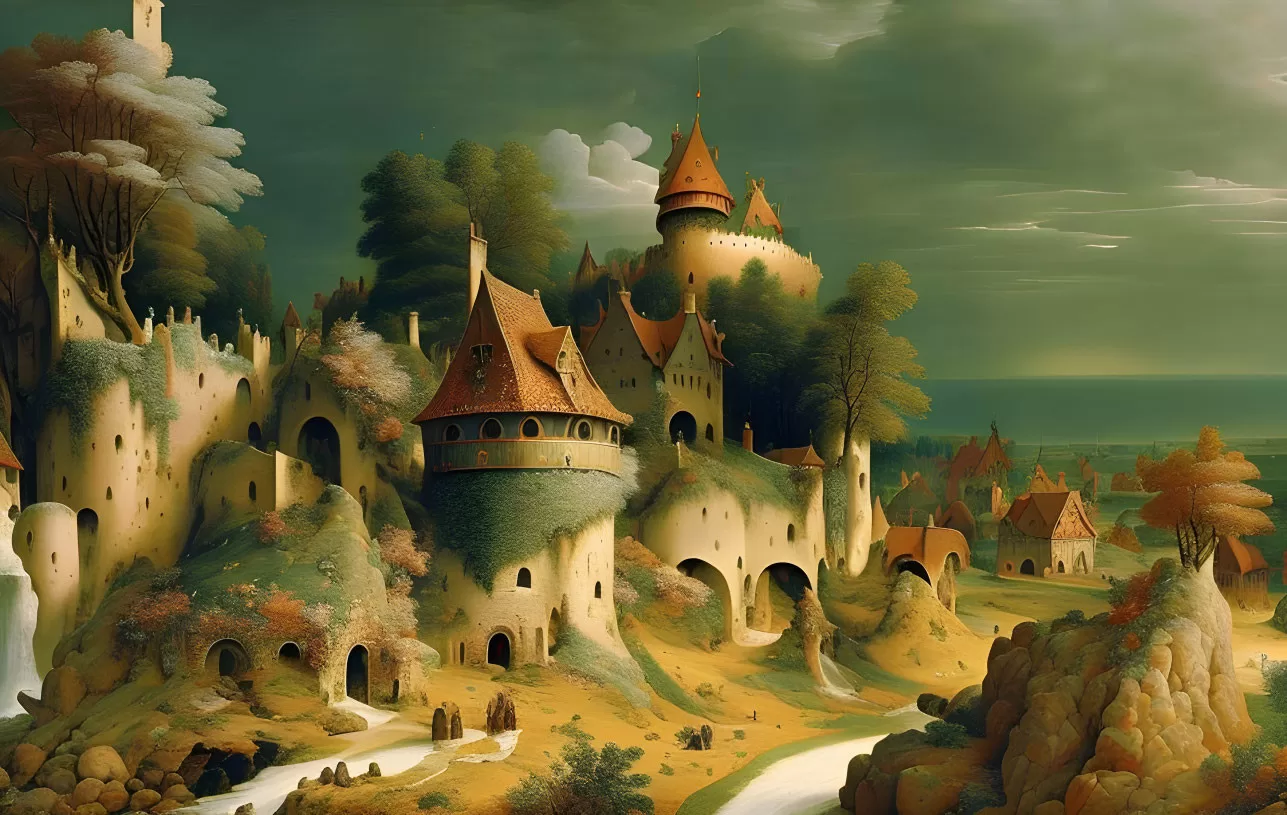
In 2022, several AI art tools were released to the public. Though they represented the culmination of research spanning decades, it seemed like there were dozens of these programs all at once.
These programs arrived with a slew of other AI generators, tools that could create music, text, computer programs and even 3D objects — all based on simple inputs by users.
This created massive controversy. Some have thrown up their hands and declared the death of the artist and the end to many creative careers, including illustrators and graphic designers.
But there are others who have taken up these tools to aid in their artistic practice. That brought about its own debates around copyright and how to actually monetize such works.
The issue is complicated because there are several arguments going on at once. There is the debate around what AI is (and if it even exists yet), what these generators mean for the future of visual arts and for creative careers, and what the actual underlying value of these AI-generated artworks can be.
What is AI?
At its simplest form, artificial intelligence is a field, which combines computer science and robust datasets, to enable problem-solving. — IBM – What is artificial intelligence (AI)?
Artificial intelligence (AI) is a field of computer science attempting to create a form of intelligence in non-animals. Intelligence might refer to decision making skills and information processing, but some thinkers expand it to include having preferences, emotional states, spiritual experiences, and more.
This is why some have been arguing that the current tools being called “AI” aren’t really AI at all. After all, they don’t make decisions or have their own ideas. They simply take user inputs and deliver an outcome.
To clear up this point, there are terms to refer to the two kinds of artificial intelligence people refer to:
-
- Strong AI: This is a computer system that can match the intelligence of any human. This is sometimes called artificial general intelligence. It is the true, science fiction version of AI, and it is the holy grail of researchers in the field.
- Weak AI: A computer system that can use its programming to solve a single type of problem. This uses machine learning and algorithms to improve performance over time.
For our purposes, AI is a program that can solve problems on its own (weak AI). For example, when you type in “artist using a computer to generate images” and then enter it into Dream by Wombo, the AI solves the problem you’ve given it. (The solution, in this case, was the image above. Though because of the changing nature of the algorithms, you will never get the same image twice — even when you put in the same prompt.)
So, AI refers to programming that allows machines to gain knowledge from their experiences, take in inputs, and perform tasks we would only expect of a human.
Apart from AI art generators, examples of what this technology can do include:
-
- Chatbots (like the popular ChatGPT, and Google Gemini)
- Fraud prevention systems
- Voice assistants
- Autonomous driving vehicles
- Disease detectors
The above examples only scratch the surface of the many ways AI is being implemented into our world. With the rise of public interest in this field of technology and the increasing funding for these kinds of projects, there will no doubt be more and more AI programs doing more and more things for us in the near future.
A Brief History of AI
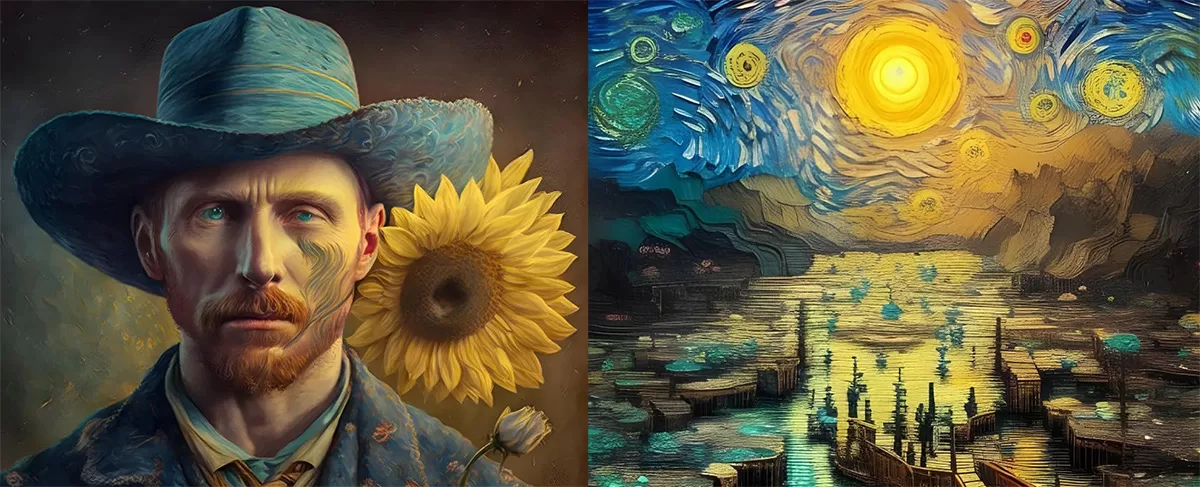
Creating an artificial being that can think for itself has been the subject of speculation for millennia. From the golem of Jewish folklore to the monster in Mary Shelley’s Frankenstein, humans have been thinking about granting intelligence to inanimate things.
Our current understanding of AI, however, comes from the rise of computer science. English mathematician and computer pioneer Alan Turing (1912-1954) believed that any thought arrived at using formal reason could be achieved by a computer using only 0s and 1s. His work in the field jump started the push to make this a reality.
By the 40s, people were already working towards an artificial brain using the ideas put forward by Turing. And in 1956, the field of AI became an official field of computer science, thanks to a conference at Dartmouth College. The discipline had begun in earnest.
Boosted by defense funding, researchers were able to make great strides for the next decade. But the real success of these projects came when the scope of the project was limited.
Weak AI, programs that are able to solve one kind of problem, have found a lot of success since the 80s. This includes the recent explosion of AI art generators, which are able to take just about any human language prompt and turn it into an image.
2014 saw a major breakthrough with the creation of the generative adversarial network (GAN). These create a set of images for each prompt and then compare them against its enormous dataset. At that point, it decides which is the best solution.
This kind of AI program is only possible now that computing speeds are fast enough and the internet makes so much data available.
Artificial intelligence improves with more data. With massive information increasingly available from web searches, commercial purchases, internet posts, texts, official records, all resting on enormous cloud computing platforms, the power of AI is growing and will continue to do so for the foreseeable future. The limits to AI are availability of data and of computational power. — Frontiers
2022 saw the biggest explosion in free, online AI art tools. That’s because in August of that year, Stable Diffusion was released. The details of how this program works were made public, and its system was lightweight enough to be able to run on most computers.
Stable Diffusion radically democratized AI art. Along with that came a wave of competing applications. These quickly gained popularity on social media where the impressive results spread — causing curiosity in some and dread in others.
The rise of AI art had arrived.
Types of AI Art Generators
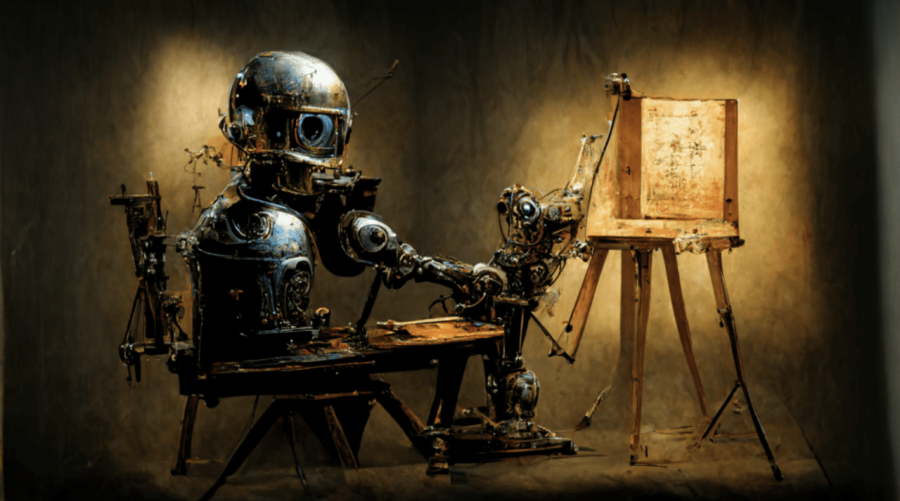
Artificial Intelligence wasn’t initially applied to art as a creator but as an impersonator. The technique is called style transfer and it uses deep neural networks to replicate, recreate and blend styles of artwork, by teaching the AI to understand existing pieces of art. — Forbes
There are two major ways that these programs work from a user’s point-of-view. The main difference among AI generators is the input you give the AI for it to generate your image. There are two types: text-to-image and image-to-image.
Though both use many of the same approaches, there are subtle differences. But what sets them apart for users is the different balance of freedom and reliability.
Text-to-Image
Text-to-image AI art generators are the most common. These require you to enter a text prompt, and then the program will do the rest. Extremely popular programs like NightCafe and DALL-E 2 use this method.
The benefit of this is that you can enter anything you could possibly describe, which makes the possibilities feel endless. And because all you need to know is human language to begin, this is by far the most intuitive form of AI art generator.
These AI generators accomplish two main tasks. The first is to successfully interpret what your words mean and generate an image based on that understanding. Some of the misunderstandings that arise can be hilarious or frustrating, but tweaking the text prompt is quick and relatively easy.
Compared to image-to-image AI generation, text-to-image is a very open process with nearly limitless freedom.
Image-to-Image
With image-to-image AI art generation, users put in pre-existing images and the program will manipulate them in some way.
Though the possibilities feel less endless than text-to-image, there are many practical applications. And some AI artists will generate a picture using text-to-image and then send it through an image-to-image process to get the piece just right.
Image-to-image generators were some of the first to become popular online, like Google’s DeepDream
Compared to text-to-image AI generation, image-to-image is a very reliable process with easier to control results.
6 Most Popular AI Art Generators

AI art generators use machine learning algorithms and deep neural networks to generate art. Large sets of already-made art are used to teach these algorithms how to find patterns and styles that can be used to make new art. — Interesting Engineering
If you are curious to try out these fun tools, here are the top six most popular and free AI art generators to get you started:
-
- NightCafe: This extremely popular option is based on Stable Diffusion, and it offers a variety of features (even for the free version!). For example, you can choose a famous abstract painting and combine it with any of your photos to turn it into a painting in the style of Picasso or Van Gogh.
- Dream by Wombo: Also very popular, Dream gives you a tremendous amount of options in the free version, including styles for generating images and ways to edit after the fact.
- DALL-E 2: This was one of the first AI art generators to reach viral popularity, and many still consider it one of the best.
- Deep Dream: Another great AI art generator to take advantage of the free trial. This neural network tool created by Aifnet only requires you to upload an image in order to generate a new artwork using different painting styles from different periods of time.
- Artbreeder: This free image-to-image generator is a great way to turn your pictures into new works of art.
- Midjourney: This is widely considered the best option for super-high-quality images, but you’ll need a Discord login to use it. Even though there’s a subscription, you can still enjoy the free trial.
How Artists Can Use AI

The power of AI to generate images are well known, but they are also able to do a wide variety of creative tasks with very little effort by the user. They can perform so many services, like generating music, editing video, and writing stories.
These abilities have been a concern for some creators, but others have fully embraced it as a way to empower their practice.
People looking to create AI art can do more than simply throw text into an image generator. You can use these tools to make images and collage them together, or simply take them as a jumping off point for your own work.
For artists who don’t have the resources or time to expand into multiple disciplines, AI art generators give them the opportunity to create art reproductions.
SIDENOTE: Video game designers, for example, can generate sprites for their project, and filmmakers can generate a score that is free to use but still new and original (at least in some sense of the term).
Artists can also use virtual assistant programs to aid them in various tasks related to their career. In short, many of the tools that AI gives us aren’t competing with us directly.
AI Art and 3D Printing

The combination of AI generators and 3D printing is also exciting. Artists can use a text-to-image generator to create inspiration for designs.
Other tools, like Point-E by OpenAI (the company that brought us DALL-E), can generate 3D objects from text prompts. Point-E does this on scant resources — able to run on a consumer-level graphics card and still produce a result in minutes.
The only drawback is that these results are point clouds, not quite the high detailed and crafted models one would want. The image above was generated using the prompt “pine tree” — and what came out the other end isn’t quite what you would expect.
To use this kind of AI art generator for 3D printing would take some work from the artist. But soon that little bit of work will be unnecessary. NVIDIA has already proven it can use AI to generate 3D objects — including people, vehicles, and objects. These models even come complete with textures.
Pros and Cons of Using AI in Your Art
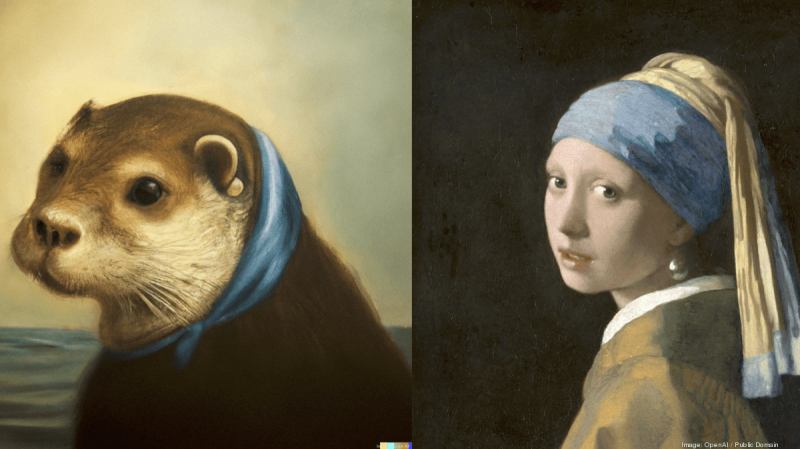
Artists who are interested in working with AI art generators are wise to consider the wide range of interests and concerns that these tools bring into your practice.
Pros of Working in AI Art
-
- Easy to get started: You don’t need any training to get started, and tools like promptoMANIA mean you can easily start piecing together effective prompts with no experience.
- Low to no cost: Almost every AI art generator has a free trial, meaning you can experiment without risking any money. Even if you do decide to pay, most of the services are relatively cheap compared to art supplies.
- Explore new styles and techniques: Because these pieces are so low effort and low cost, you can quickly try out ideas. You can also use image-to-image generators to see what your artwork could be if you changed up your style.
Cons of Working in AI Art
-
- Legal framework around ownership still in flux: AI art is so new that the current legal approaches could very well change. That makes it an unreliable field, and some artists might be hesitant to put too much time and energy into something that isn’t stable.
- Could distract you from developing your own skills: When you rely on these tools, you spend less time working on your ability to create art by hand. That’s not a big deal once in a while (or if you make sure to keep practicing), but in time, over reliance will undermine your own abilities.
- Works might not be valuable, especially in the long term: You can generate a lot of AI art fast, but so can anyone else. Unless you do something extremely interesting and fantastic, the works are unlikely to command much of a price.
How to Create Art Using AI Generators

There are many ways you can use AI art generators to aid the creative process. How you go about doing that depends on what you need at the moment. Are they creating your images wholecloth? Are you manipulating images you’ve already made?
Text-to-image AI generators are best for artists looking to build an image from scratch. After landing on a general idea of what they want, artists might spend hours tweaking the text prompt to get the exact look they are going for.
Some tips for making artificial intelligence art with text-to-image generators include:
-
- Using a celebrity as a character to get consistent results over a number of pieces
- Specifying a certain artist’s style to keep the results looking the same
- Defining the kind of art you want (painting, photo, CGI, etc.)
- Specifying the genre or school of art
- Getting more specific with the details (e.g. the clothes a character is wearing or the weather)
If you are looking to become a pro at prompt engineering (the skill of getting a great prompt, coined by OpenArt) you should check out their Prompt Book for Stable Diffusion. This gives you a great starting point to understand how the program reads your words.
The Prompt Book also shows you how to add together ideas for your image until you are able to have control over each and every detail. While it is made specifically for Stable Diffusion, many of the concepts apply broadly.
PromptoMANIA is a prompt generator, allowing you to get the best possible prompt for your idea in an intuitive interface.
Image-to-image AI generators are best when you need a little digital assistance in editing your art. These can apply a wide range of effects and recast your input into any imaginable style.
The key to all of it is experimentation and not settling on your first result. The algorithms continually learn and change, making for an interesting collaborative process between the diligent human artist and its AI studiomate.
Luckily, most platforms allow you several free attempts before charging you a dime, so you can try out some ideas and get the hang of the process before committing.
AI Art and Copyrights
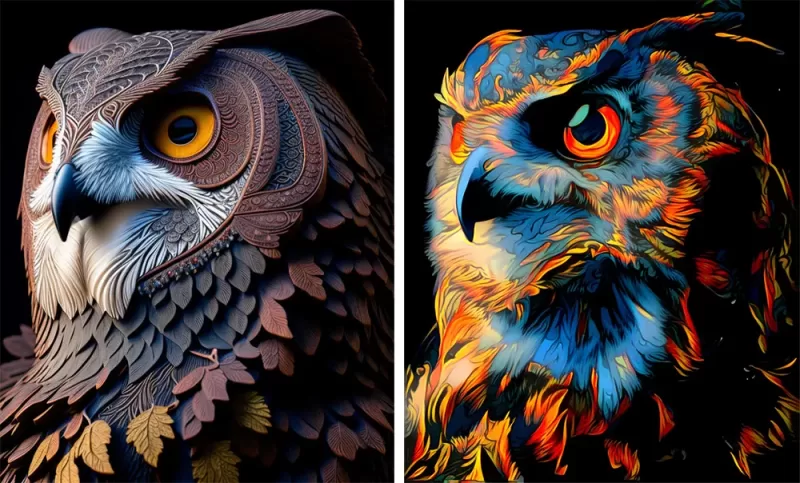
What makes the new breed of A.I. tools different, some critics believe, is not just that they’re capable of producing beautiful works of art with minimal effort. It’s how they work. Apps like DALL-E 2 and Midjourney are built by scraping millions of images from the open web, then teaching algorithms to recognize patterns and relationships in those images and generate new ones in the same style. — The New York Times
One of the biggest concerns for artists is the ability to copyright their work with AI generators. Without copyright, it becomes very difficult to make a living.
So, can AI-generated art be copyrighted? The US Copyright Office has decided that AI-generated images are not copyrightable. But that doesn’t mean there is no way to protect your work if you use AI tools.
Their new rules, published in late February 2023, focused on the comic book Zarya of the Dawn by Kris Kashtanova. The images themselves were created using the AI image generator Midjourney. The US Copyright Office decided that these images could not be copyrighted, because they were not created by a human.
However, because Kashtanova arranged the images and added text, those elements could be copyrighted.
This issue bleeds into a second question, which is arguably more important for artists. Can AI art be used commercially? The answer to that is yes — as long as the generator grants users commercial rights (most do).
AI generated images can even be sold on Adobe Stock, presenting a possible revenue stream for creators. But the ability to legally submit images and receive payment for them is based on the terms of service for the various AI tools. As stated above, they must give users broad commercial use. Otherwise, Adobe won’t accept the submission.
This is likely how most major buyers will work moving forward. But as these tools are so new, you can expect copyright rules and commercial attitudes to continue to evolve. That makes some companies skittish to really embrace the technology right now, as there is still a lot of uncertainty.
What AI Means for the Future
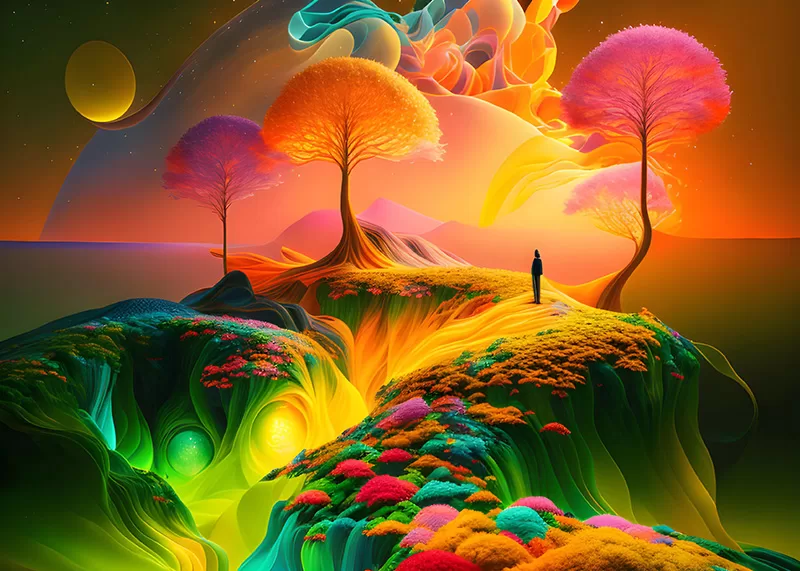
Amid the rapid commoditization of generative AI, there is a growing debate over the rules and regulations, raising questions about creativity, monetization, ethics and more. — Forbes
Most artists and art lovers have some level of concern about what AI art generators will mean for the future. And beyond that, there are worries about the ethical use of these programs.
So, the main question is, will artificial intelligence take over art?
Throughout this article, you can see AI generated art. While some of it is impressive and some of it is not, none of it provides any striking artistic vision. At least for now, the ability for an artist to share a moving perspective still seems uniquely human.
For people with creative careers that are hired for their skills and not their perspective (like some illustrators and graphic designers), it is deeply concerning. AI will almost certainly eat up small-scale and low budget jobs — the kind many people rely on at the beginning of their careers. Established illustrators might be fine, but those trying to get started will likely find very few opportunities thanks to AI art generators.
Creative careers are already among the least stable, and very few people from poorer backgrounds are able to enter given this insecurity. This problem will only increase if AI art generators replace the vast majority of jobs in these fields.
On the other hand, that same effect is a benefit to people working on creative projects who have limited resources. If you can’t afford a big team, you might be able to afford inexpensive AI tools.
Some critics have called out AI generators for the way they generate images. Essentially, these tools go through huge sets of images that were created by humans. That trains them on what certain terms mean. In a sense, the AI is “stealing” from the work of artists — and putting them out of a job at the same time.
SIDENOTE: Getty Images, which owns an enormous amount of pictures on the internet including some used for training AI, is suing to protect their images from being used this way.
Many artists are standing up, too, as their art is used in datasets meant to train AI systems — all without the consent of the artists or any compensation.
It’s here that we’ve crossed over into the ethics of using programs made by stealing from artists. But there are still more concerns.
The risks of text-to-image tools, Google and OpenAI both say, include the potential to turbocharge bullying and harassment; to generate images that reproduce racism or gender stereotypes; and to spread misinformation. — Time
As AI art generators get better and better, there is concern that deep fakes and forgeries will become indiscernible from the real thing. The programs continue to improve, moving us always closer to a time when we can’t really believe any image we see.
This complex web of concerns has made AI art highly controversial, and the debate has only begun. In this case, however, the genie is unlikely to go back into the bottle.
Final Thoughts
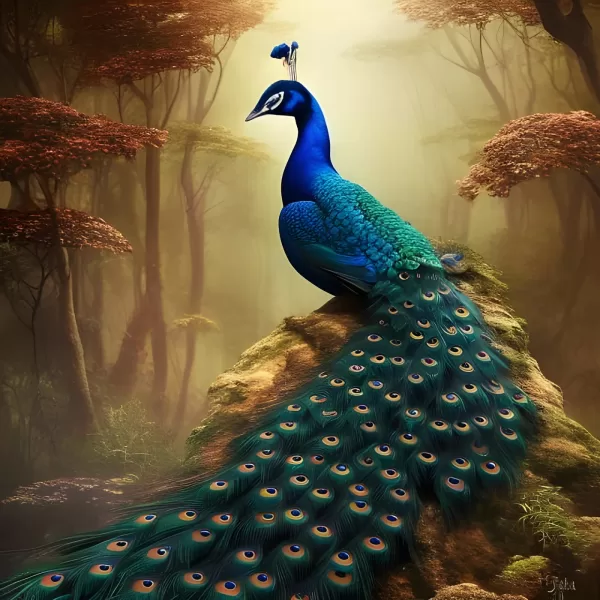
Artificial intelligence art has provided a lot of excitement and concern over the past year. And as the development of these tools speeds up, these feelings will only increase.
It is hard to conceive of a way that this will stop, forcing artists and art lovers to come to terms with these new AI art generators. But this has been true throughout the history of art. Technology makes new things possible at the same time it makes other human activity redundant.
Whatever the outcome, the next few years will prove pivotal in shaping the future of art and AI.
The legal frameworks we use to regulate it will no doubt continue to shift, and the market’s appreciation of the works is likely to change, too. In this dynamic and unpredictable space, AI art will continue to make headlines and upend the way we see art.
As battles rage over how to compensate the artists AI trains on, and as arguments flare up between enthusiasts and skeptics — people will continue to use these generators more and more. They will be an everyday feature of our lives in a few years.
That could spell disaster for artists, or it might empower a new generation of creators to make projects they never could have tackled before.
PLEASE SHARE THIS:
